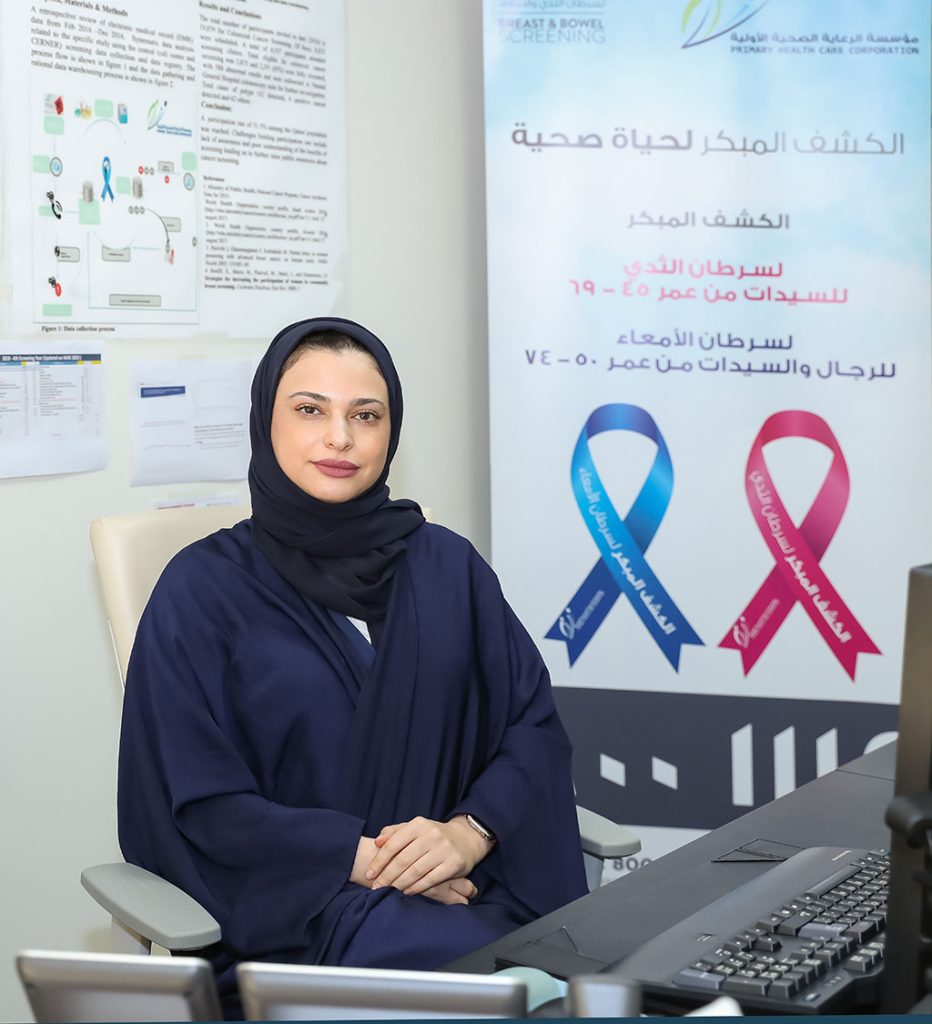
Dr Shaikha Abu Shaikha
Director of Screening Programs
Primary Health Care Corporation
BSc, MD, Senior Consultant Community Medicine
Do you know that bowel cancer has been determined by the World Health Organization as among the leading causes of death worldwide? It occurs more often in both males and females aged 50 years and older. However, due to advancements in medical science and technology, chances of successful treatment of the disease, if caught at an early stage, increases to 90%.
For this reason it is important for you and your family to know more about bowel cancer prevention, early detection and how it can be treated in order for you to make an informed decision that will help you live longer and give you peace of mind.
Learn more about bowel cancer and bowel cancer screening. Send us your questions to screenforlife.info@phcc.gov.qa. Our doctor will certainly be more than happy to respond to them.
So, what exactly is bowel cancer?
Bowel cancer starts in the large intestine, a part of the digestive system. They begin as small growths called polyps. In many cases, bowel cancer can be successfully treated by removing polyps.
What is Breast Cancer Screening?
Breast cancer screening involves a procedure called a mammogram, which uses X-rays to look for tumors and abnormalities in the breast. Mammogram can detect these tumors and abnormalities before they can be felt. The Ministry of Public Health
recommends women receive screening mammogram every three years starting at age 45
Who Should Be Screened for Bowel Cancer?
The Ministry of Public Health recommends bowel cancer screening every two years beginning at age 50.
What Happens During Breast Cancer Screening?
Your screening mammogram will occur in a private exam area. You will be asked to remove clothing above your waist, as well as any jewelry or other objects that could interfere with the exam.
Next, you will be positioned in front of a mammogram machine. The person providing the exam will place your breast between two plates, which may cause slight discomfort. The radiologic technician will take two images and repeat the process for your other breast. The entire exam takes about 20 minutes.


